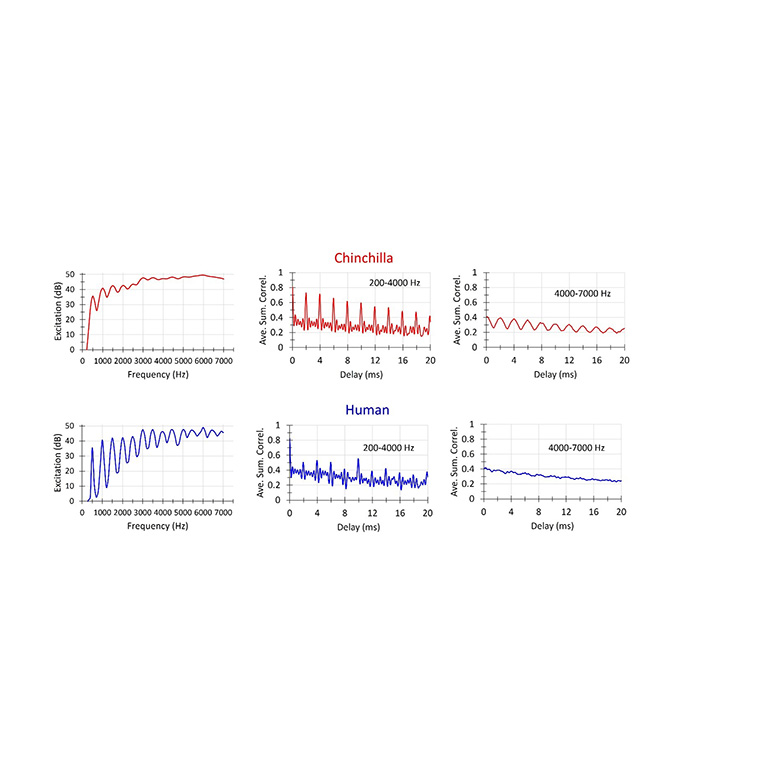Cochlear tuning and the peripheral representation of harmonic sounds in mammals.
Cochlear tuning and the peripheral representation of harmonic sounds in mammals.
- William Shofner
- Publication Date
2022 - Website
- Publication information
This study compares the spectral and temporal representations of stochastic, complex sounds which underlie the perception of pitch strength in humans and chinchillas. Specifically, the pitch strengths of these stochastic sounds differ between humans and chinchillas, suggesting that humans and chinchillas may be using different cues. Outputs of auditory filterbank models based on human and chinchilla cochlear tuning were examined. Excitation patterns of harmonics are enhanced in humans as compared with chinchillas. In contrast, summary correlograms are degraded in humans as compared with chinchillas. Comparing summary correlograms and excitation patterns with corresponding behavioral data on pitch strength suggests that the dominant cue for pitch strength in humans is spectral (i.e. harmonic) structure, whereas the dominant cue for chinchillas is temporal (i.e. envelope) structure. The results support arguments that the broader cochlear tuning in non-human mammals emphasizes temporal cues for pitch perception, whereas the sharper cochlear tuning in humans emphasizes spectral cues. This paper was an invited contribution to a special issue of the Journal of Comparative Physiology A entitled “Neuroethology of Auditory Systems – Contributions in Memory of Albert S. Feng.”
 The College of Arts
The College of Arts